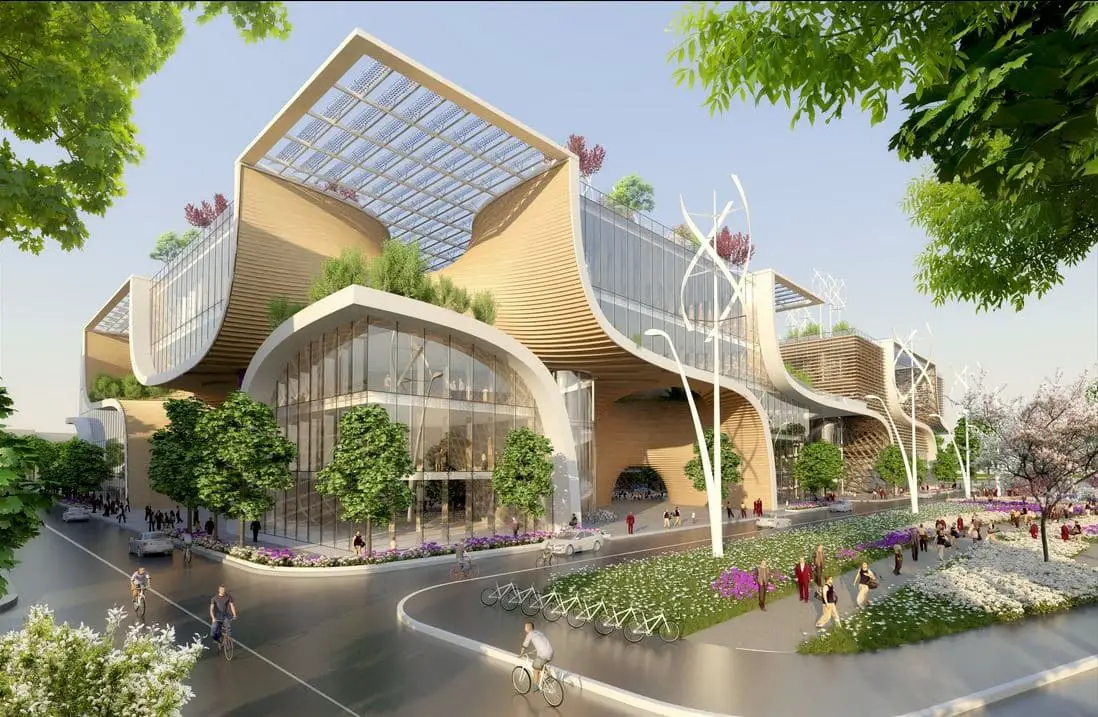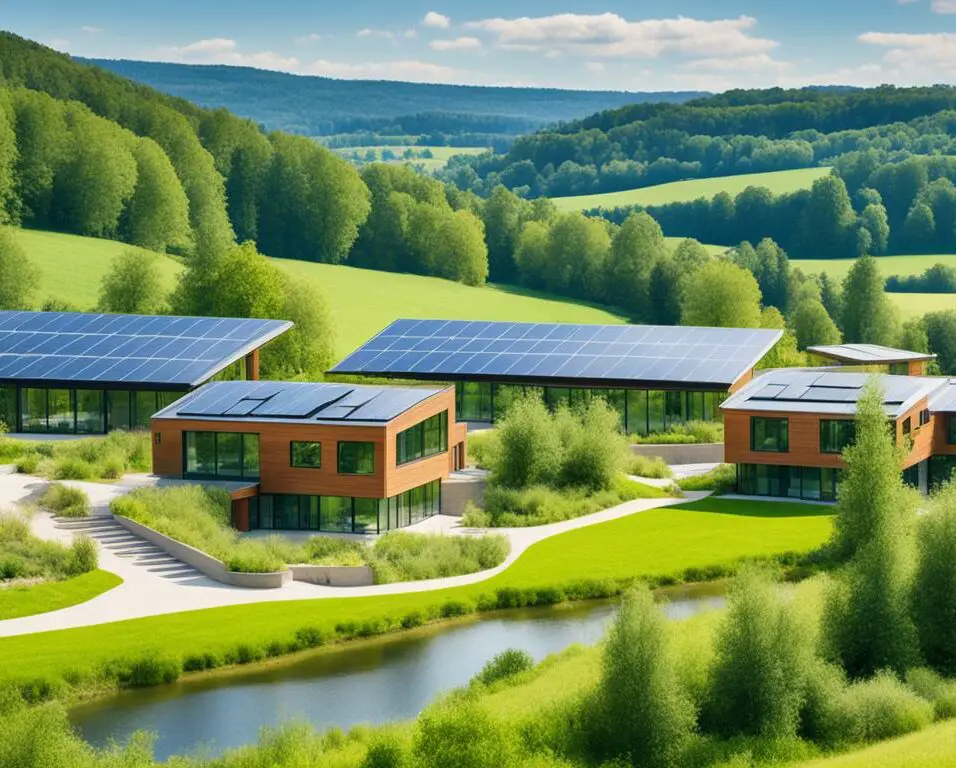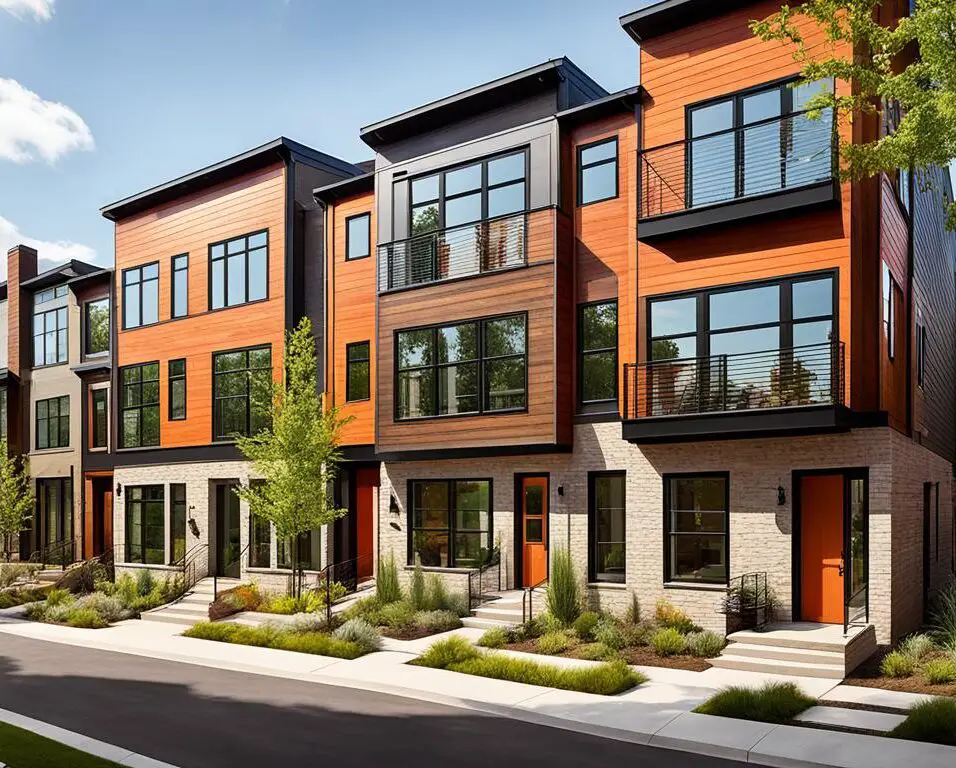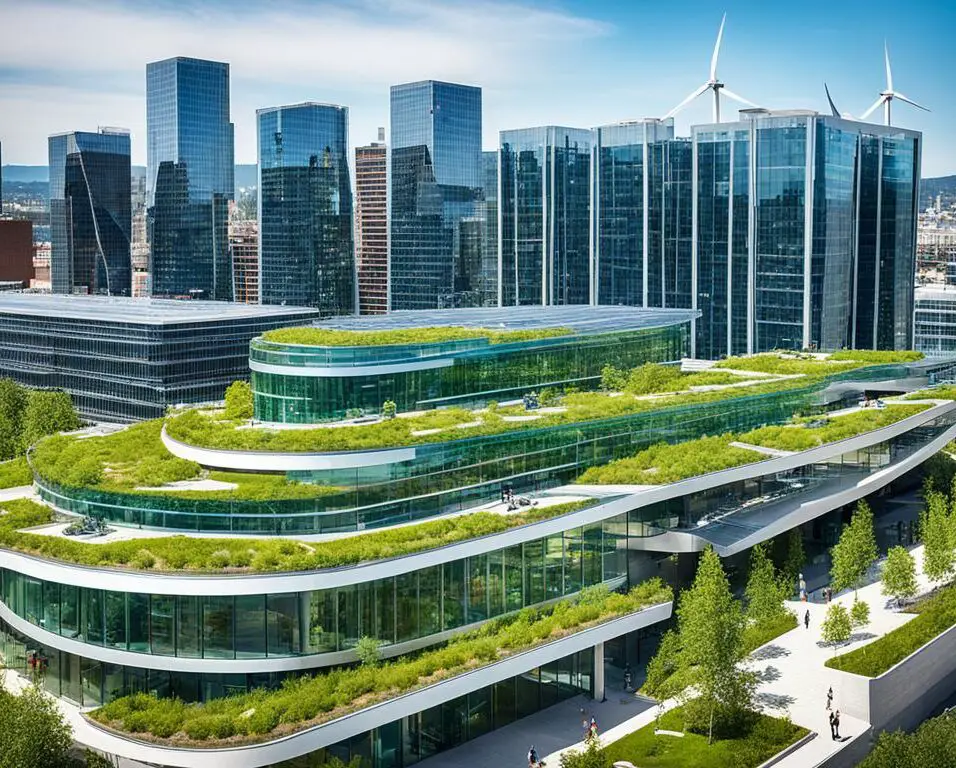What Is Sustainable Design In Architecture
Introduction
Sustainable design in architecture has emerged as a critical response to the pressing environmental and social challenges of our time. It is a design approach that seeks to minimize negative impacts on the environment while enhancing the well-being of individuals and communities. The concept of sustainable design in architecture encompasses a range of principles and strategies that aim to create buildings and spaces that are environmentally responsible, resource-efficient, and socially equitable.
At its core, sustainable design in architecture recognizes the interconnectedness of the built environment with the natural world. It acknowledges that buildings consume vast amounts of energy and resources during construction, operation, and eventual demolition. By integrating sustainable practices into the design process, architects can mitigate these negative impacts and create spaces that promote environmental stewardship.
Key aspects of sustainable architectural design include energy efficiency, water conservation, use of renewable materials, waste reduction, and consideration of the site’s ecological context. Architects employ various strategies to achieve these goals, such as passive design techniques, incorporation of renewable energy systems, efficient use of water and materials, and integration of green spaces.
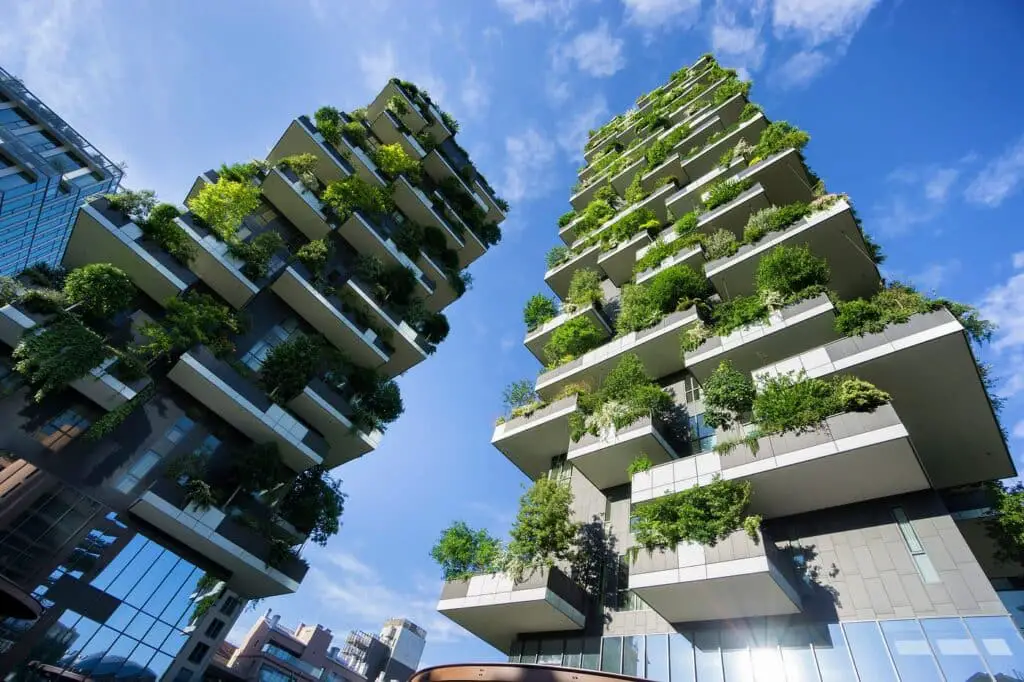
What Does Sustainable Design In Architecture Mean?
Sustainable design seeks to reduce negative impacts on the environment, and the health and comfort of building occupants, thereby improving building performance. The basic objectives of sustainability are to reduce consumption of non-renewable resources, minimize waste, and create healthy, productive environments.
Sustainable design in architecture refers to an approach that aims to create buildings and structures that minimize their negative impact on the environment while maximizing their positive contributions to society and the economy. It is an innovative and forward-thinking concept that seeks to address the urgent challenges of climate change, resource depletion, and social equity.
At its core, sustainable design in architecture incorporates principles of environmental stewardship, energy efficiency, and social responsibility. It promotes resource efficiency, waste reduction, and healthy, habitable environments. Sustainable architects reconcile current requirements with future needs.
Buildings are responsible for a significant portion of global energy consumption and greenhouse gas emissions.Sustainable architects reduce energy demand via insulation, natural lighting and ventilation, renewable energy sources like solar panels & wind turbines, and energy-efficient technology and systems. Sustainable design reduces energy demand and fossil fuel use, combating climate change and promoting a sustainable energy future.
What Is An Example Of Sustainable Design Architecture?
Examples of sustainable design include the Shanghai Tower in China and the Bullitt Center in Seattle. These buildings often involve the use of solar panels, self-balancing water systems, and eco-friendly materials in construction.
One notable example of sustainable design architecture is the Bullitt Center, located in Seattle, Washington. Completed in 2013, the Bullitt Center is often referred to as the “greenest commercial building in the world” and serves as a model for sustainable design.
The Bullitt Center was designed to be a net-zero energy building, meaning it generates as much energy as it consumes on an annual basis. This achievement is made possible through a combination of innovative design features. The building’s roof is covered with a large array of photovoltaic panels that harvest solar energy to power the facility. Additionally, a geothermal system utilizes the consistent temperature of the Earth to heat and cool the building, reducing reliance on traditional HVAC systems.
To optimize energy efficiency, the Bullitt Center incorporates natural ventilation and daylighting. The building features a highly efficient envelope with triple-glazed windows and external shades that regulate solar heat gain. The interior spaces are designed to maximize natural light penetration, reducing the need for artificial lighting during the day. Occupancy sensors and efficient LED lighting further minimize energy consumption.
The Bullitt Center also prioritizes water conservation. Rainwater is collected and treated on-site, providing potable water for the building’s occupants. The building uses 70% less water than typical office buildings due to low-flow fixtures and water-saving systems.
How To Make Sustainable Design In Architecture?
Sustainable Architecture Strategies | Building Design
- Optimize site potential.
- Minimize non-renewable energy consumption.
- Use environmentally preferable products.
- Protect and conserve water.
- Enhance indoor environmental quality.
- Optimize operational and maintenance practices.
Creating sustainable design in architecture involves a thoughtful and holistic approach that considers various aspects of the building’s design, construction, and operation. Here are some key steps to follow in order to make sustainable design in architecture:
Set clear sustainability goals: Begin by establishing specific sustainability objectives for the project. These goals may include energy efficiency, water conservation, use of eco-friendly materials, or social considerations. Clearly defining these objectives will guide the design process.
Optimize building orientation and site design: Maximize the use of natural resources by orienting the building to take advantage of daylight and passive solar heating and cooling. Consider the surrounding environment, landscape, and existing vegetation to minimize disruption and maximize the building’s integration into the site.
Embrace energy efficiency: Incorporate energy-efficient strategies and technologies throughout the building’s design. This may include efficient insulation, high-performance windows, energy-efficient lighting systems, and the use of renewable energy sources such as solar or wind power.
Prioritize water conservation: Implement water-saving features such as low-flow fixtures, dual-flush toilets, and rainwater harvesting systems. Use landscaping techniques that reduce the need for irrigation and manage stormwater runoff effectively.
Select sustainable materials: Choose materials with low environmental impact, such as recycled or reclaimed materials, renewable resources, and those with a reduced carbon footprint. Consider factors like material life cycle, embodied energy, and potential for recycling or repurposing.
What Is The Purpose Of Sustainable Architecture?
Sustainable architecture is not only energy-efficient and healthier for its inhabitants, but it also benefits the planet. By reducing our reliance on non-renewable resources (fossil fuels such as coal and oil), green architecture can actually promote and maintain a cleaner environment.
Sustainable design aims to construct greener, more resilient buildings. Sustainable architecture considers social, economic, & environmental factors throughout a building’s lifespan.
Environmental Stewardship: The primary purpose of sustainable architecture is to reduce the environmental footprint of buildings. By incorporating energy-efficient technologies, renewable energy sources, and passive design strategies, sustainable architecture aims to minimize energy consumption and greenhouse gas emissions. It also focuses on conserving water, reducing waste, and using eco-friendly materials to protect natural resources and ecosystems.
Climate Change Mitigation: Sustainable architecture plays a crucial role in mitigating climate change. Buildings use a large share of world energy and greenhouse gas emissions.Energy-efficient buildings and renewable energy aid shift to a low-carbon economy in sustainable architecture.
Resource Efficiency: Sustainable architecture promotes the efficient use of resources throughout a building’s life cycle. IIt prioritizes low-embodied energy materials, recycles and reuses, and reduces waste throughout building and operation. By optimizing resource use, sustainable architecture reduces resource depletion and minimizes the impact on ecosystems.
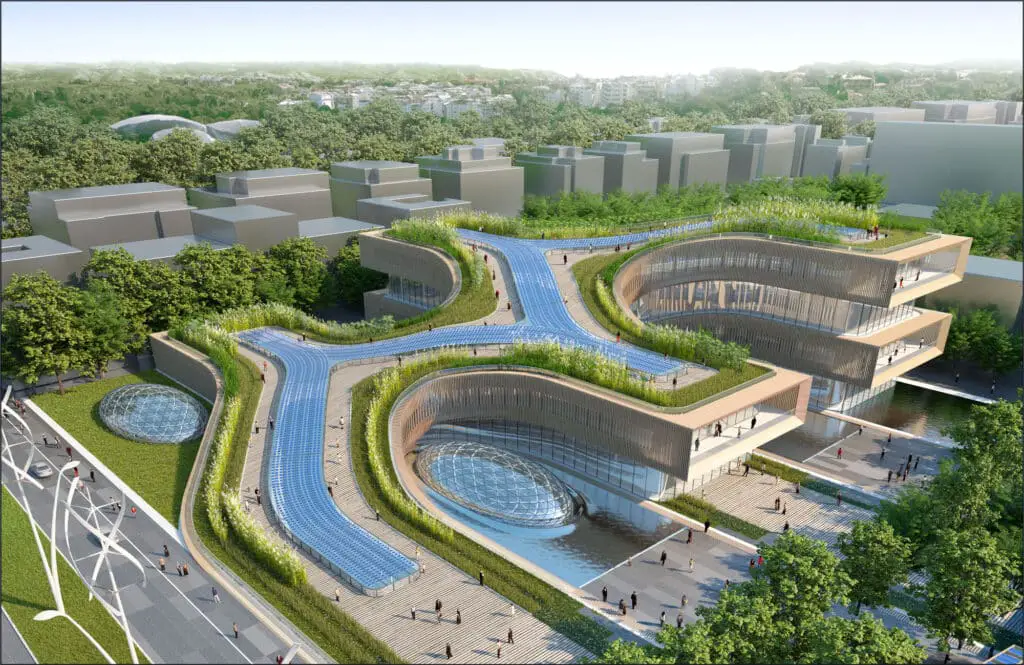
What Are The Features Of Sustainable Architecture?
Some of the more common features of green buildings include: Energy Efficiency. Renewable Energy Generation. Water Efficiency.
Sustainable architecture encompasses various features that distinguish it from conventional design practices. These features are aimed at reducing the environmental impact of buildings and promoting a more sustainable and resilient built environment. Here are some key features of sustainable architecture:
Energy Efficiency: Sustainable architecture uses passive solar design, optimal building orientation, effective insulation, & high-performance windows. Energy-efficient technologies & renewable energy systems like solar panels and wind turbines reduce energy consumption and fossil fuel use.
Water Conservation: Sustainable architecture uses passive solar design, optimal building orientation, effective insulation, & high-performance windows. Energy-efficient technologies & renewable energy systems like solar panels and wind turbines reduce energy consumption and fossil fuel use. It also incorporates landscaping techniques that minimize the need for irrigation and manage stormwater runoff effectively.
Use of Sustainable Materials: Sustainable architecture emphasizes the use of eco-friendly and locally sourced materials with low environmental impact. This includes recycled or reclaimed materials, responsibly harvested wood, and materials with low embodied energy. It also considers the entire life cycle of materials, including their production, use, and disposal.
Indoor Environmental Quality: Sustainable architecture focuses on creating healthy and comfortable indoor spaces. It ensures good indoor air quality through proper ventilation systems and the use of non-toxic and low-emitting materials. It also maximizes natural lighting, provides thermal comfort, and minimizes noise pollution to enhance occupant well-being.
What Is Sustainable Architecture Called?
Sustainable architecture is also referred to as green architecture or environmental architecture. It challenges architects to produce smart designs and use available technologies to ensure that structures generate minimal harmful effects to the ecosystem and the communities.
Sustainable architecture is often referred to by various names that highlight its focus on environmental responsibility and resource efficiency. Some common terms used to describe sustainable architecture include:
Green Architecture: This term is widely used to describe architecture that incorporates environmentally friendly design principles. Green architecture emphasizes energy efficiency, water conservation, use of eco-friendly materials, and the integration of renewable energy systems.
Eco-Architecture: Eco-architecture emphasizes the ecological aspects of sustainable design. It aims to create buildings that have a minimal impact on the natural environment and promote ecological balance. Eco-architecture often incorporates features such as passive design strategies, green roofs, and the use of sustainable materials.
Sustainable Design: This term encompasses a broader range of design disciplines, including architecture, and emphasizes the goal of creating environmentally and socially sustainable solutions. Sustainable design encompasses principles of energy efficiency, resource conservation, social equity, and long-term resilience.
Regenerative Design: Regenerative design goes beyond sustainability and seeks to create buildings and systems that have a positive impact on the environment and society. It aims to restore and enhance ecosystems, create net-positive energy buildings, and promote social well-being.
What Is The Concept Of Sustainable Architecture?
Sustainable architecture is also referred to as green architecture or environmental architecture. It challenges architects to produce smart designs and use available technologies to ensure that structures generate minimal harmful effects to the ecosystem and the communities.
The concept of sustainable architecture revolves around creating buildings and structures that minimize their negative impact on the environment while maximizing their positive contributions to society and the economy. It is a holistic approach that considers the entire life cycle of a building, from design and construction to operation and eventual disposal.
At its core, sustainable architecture aims to achieve a balance between the needs of the present without compromising the ability of future generations to meet their own needs. It integrates principles of environmental stewardship, energy efficiency, resource conservation, social equity, and resilience.
Sustainable architecture focuses on reducing energy consumption and greenhouse gas emissions by employing energy-efficient design strategies, utilizing renewable energy sources, and optimizing building systems. It also prioritizes water conservation through water-saving technologies, rainwater harvesting, and efficient plumbing fixtures.
The use of sustainable materials is another key aspect of sustainable architecture. It involves selecting materials with low embodied energy, utilizing recycled or reclaimed materials, and minimizing waste generation. Sustainable architecture also considers indoor environmental quality by promoting good air quality, natural lighting, thermal comfort, and acoustics.
What Are The Goals Of Sustainable Design In Architecture?
The primary goals of sustainable design in architecture are to reduce the environmental footprint of buildings, promote energy efficiency, conserve resources, enhance occupant comfort and health, and contribute to the long-term sustainability of the built environment. It seeks to strike a balance between human needs, ecological considerations, and economic viability.
The goals of sustainable design in architecture are centered around creating buildings and structures that prioritize environmental responsibility, social equity, and economic viability. These goals aim to address the urgent challenges of climate change, resource depletion, and social inequities. Here are the primary goals of sustainable design in architecture:
Environmental Responsibility: The foremost goal of sustainable design is to minimize the negative environmental impact of buildings. This includes reducing energy consumption, greenhouse gas emissions, water usage, and waste generation. Sustainable design promotes the use of renewable energy sources, energy-efficient technologies, eco-friendly materials, and strategies for water conservation and waste management.
Resource Efficiency: Sustainable design seeks to optimize the use of resources throughout a building’s life cycle. This involves selecting materials with low embodied energy, promoting recycling and reuse, and minimizing resource consumption in construction and operation. The goal is to reduce resource depletion, minimize waste, and promote a circular economy.
Social Equity: Sustainable design in architecture prioritizes social equity by considering the needs and well-being of all individuals and communities. It aims to create inclusive and accessible spaces that accommodate diverse populations. Sustainable design engages with local communities, respects cultural values, and promotes social cohesion and well-being.
What Are The Pillars Of Sustainable Architecture?
The three pillars of sustainability are: environmental pillar, economic pillar and social pillar.
The pillars of sustainable architecture are the fundamental principles that form the foundation of sustainable design practices. These pillars encompass the key aspects and areas of focus in creating environmentally responsible and socially conscious buildings. Here are the main pillars of sustainable architecture:
Energy Efficiency: Energy efficiency is a central pillar of sustainable architecture. It involves reducing energy consumption through design strategies such as optimizing building orientation, employing passive solar techniques, incorporating insulation, and utilizing efficient lighting and HVAC systems. The goal is to minimize the use of fossil fuels and greenhouse gas emissions.
Water Conservation: Water conservation is another crucial pillar of sustainable architecture. It entails implementing strategies to minimize water consumption, such as using water-efficient fixtures, implementing rainwater harvesting systems, and promoting water recycling and reuse. The aim is to preserve water resources and reduce strain on water supply infrastructure.
Material Selection and Resource Efficiency: Sustainable architecture prioritizes the use of eco-friendly and resource-efficient materials. This includes selecting materials with low embodied energy, utilizing recycled or reclaimed materials, and minimizing waste generation. The focus is on reducing resource consumption, promoting the circular economy, and minimizing the environmental impact of material extraction, production, and disposal.
Indoor Environmental Quality: The pillar of indoor environmental quality emphasizes creating healthy and comfortable indoor spaces. It involves optimizing ventilation, utilizing non-toxic and low-emitting materials, maximizing natural lighting, and providing thermal comfort and proper acoustics. The objective is to enhance occupant well-being, productivity, and satisfaction.
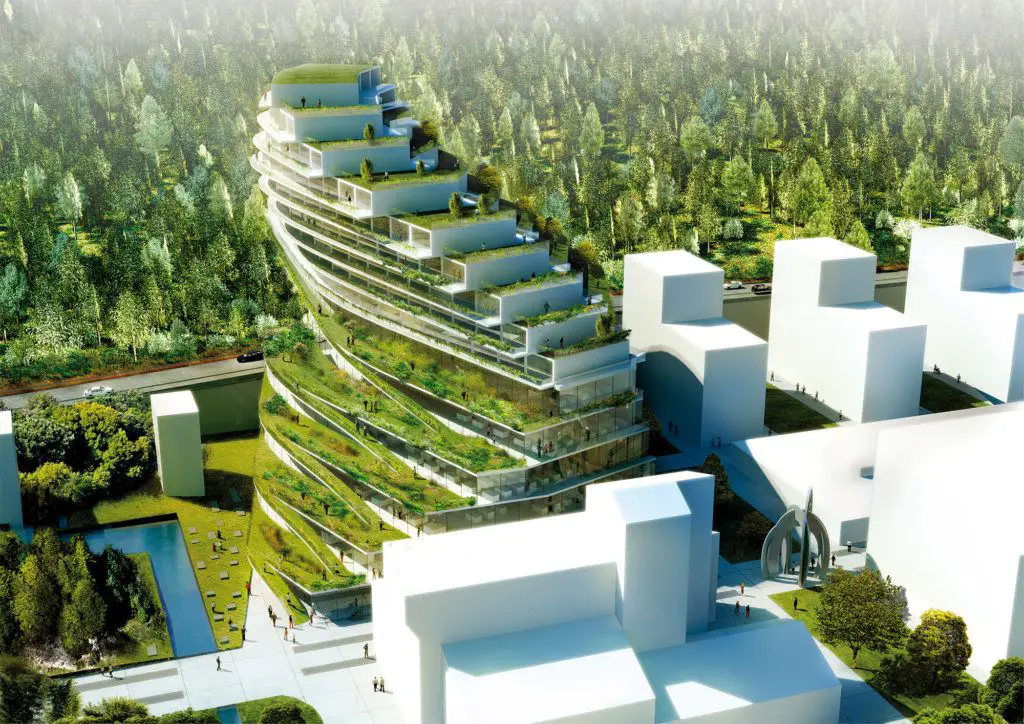
Conclusion
Sustainable design in architecture holds immense promise for addressing the urgent challenges of climate change, resource depletion, and social inequality. It is an approach that emphasizes responsible and conscientious design practices to create buildings and spaces that are environmentally sensitive, socially equitable, and economically viable. From energy efficiency and water conservation to the use of renewable materials and waste reduction, these practices contribute to reducing the ecological footprint of buildings and promoting a more sustainable future.
Furthermore, sustainable design in architecture recognizes the importance of human well-being and community vitality. By prioritizing factors such as indoor air quality, natural lighting, and access to green spaces, architects can create environments that enhance the physical and mental health of occupants and foster a sense of connection with nature. The implementation of sustainable design principles requires a collaborative effort from architects, clients, engineers, policymakers, and the wider community. It demands a shift in mindset and a commitment to long-term thinking, considering the lifecycle of buildings and their impact on both the environment and society.



